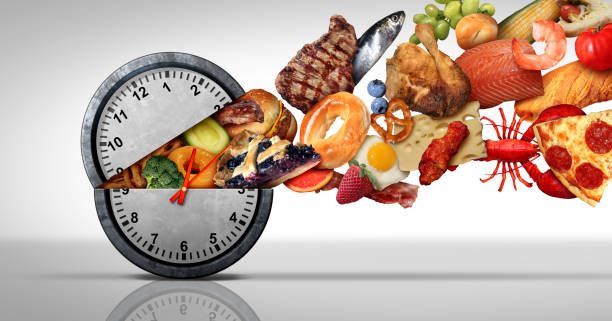Foods to Include and Avoid for Ulcerative Colitis Symptoms in the United States
Nearly half of people with ulcerative colitis report that diet affects their flares. This guide outlines which foods commonly ease or aggravate symptoms, how to modify eating during flares and remission, and practical steps to work with your gastroenterology team to identify personal triggers and lower inflammation in 2025.

How diet fits into ulcerative colitis care
Ulcerative colitis (UC) is an inflammatory disease of the colon managed mainly with medical treatments and sometimes surgery. Diet is not a cause of UC, but clinical guidance and research (including recent reviews and guideline updates) indicate that what you eat can affect symptoms, the gut microbiome, and relapse risk. As of 2025, evidence supports using dietary patterns as a complement to medical therapy—customized to an individual’s disease activity, tolerances, and nutritional needs.
Key practical principle: coordinate any major dietary changes with your gastroenterology team and, ideally, an IBD-trained dietitian.
Foods commonly recommended to include (helpful patterns)
Population studies and clinical trials support plant-forward and Mediterranean-style eating for long-term gut health and helping maintain remission. These approaches prioritize whole, minimally processed foods and healthy fats.
- Vegetables and fruit (in forms you tolerate)
- In remission: include a wide range of colorful vegetables and fruits to boost fiber, antioxidants, and micronutrients.
- During a flare: choose well‑cooked, peeled vegetables and canned fruits without seeds to limit mechanical irritation.
- Legumes and pulses (beans, lentils)
- Population data link these to protective effects; they are useful protein alternatives to red and processed meats.
- Whole grains (when tolerated)
- Provide fiber and prebiotic compounds; reintroduce gradually after inflammation settles.
- Tea (regular tea drinking has been associated with protective effects)
- Olive oil and other unsaturated fats
- Prefer these over margarine and heavily processed fats.
- Fish and poultry, plant-based proteins
- Swapping red/processed meat for fish, poultry, or legumes is associated in some studies with a lower relapse risk.
- Probiotics (as an adjunct)
- Certain probiotic formulations may help some people with UC when used alongside medical therapy; discuss specific strains, doses, and timing with your clinician.
Note: “Plant-forward” and Mediterranean patterns are broad frameworks; individual food choices should be tailored.
Foods and ingredients commonly linked to worse outcomes or higher relapse risk
Population-level research and mechanistic studies point to several food groups and additives tied to higher UC risk or relapse. Limiting these may help reduce inflammatory triggers.
- Red and processed meats
- Includes beef, deli meats, hot dogs and sausages. Several studies associate these with higher incidence and relapse risk.
- Ultra‑processed foods and convenience items
- Packaged, heavily processed foods are linked to dysbiosis and poorer outcomes.
- Margarine and some hydrogenated/industrial fats
- Linked to higher disease risk in population studies; swap for olive oil where feasible.
- Alcohol
- Regular alcohol use has been associated with increased relapse in some studies; cutting back or abstaining may be beneficial.
- Food additives to read labels for and avoid when possible
- Maltodextrin, some artificial sweeteners (e.g., sucralose-type), and carrageenan have been linked to microbiome disruption and increased inflammation in lab and some human studies.
- Very high intakes of certain fats or single nutrients
- Some research shows mixed or preliminary associations between myristic acid or very high alpha‑linolenic acid (ALA) intake and relapse risk — discuss supplement-level intakes with your clinician.
What to eat during active flares (short-term, symptom-focused)
When UC is active—especially with frequent bleeding, urgent diarrhea, or severe cramping—reducing stool bulk and mechanical irritation can relieve symptoms. Use short-term low-residue choices under clinical supervision:
- Refined grains: white rice, refined breads, plain pasta
- Well‑cooked, peeled vegetables (avoid skins and seeds)
- Canned fruit without seeds or peels
- Lean proteins: well-cooked chicken, fish, eggs
- Plain low‑fat dairy if tolerated (or suitable alternatives if intolerant)
- Avoid raw vegetables, seeds, nuts, corn, and high-fiber raw fruit until inflammation improves
Important: Low-residue/low-fiber diets are intended for short periods during moderate–severe flares and should be reintroduced to more fiber-containing foods as inflammation subsides to support long‑term gut health.
Foods to reintroduce gradually after a flare
After symptoms and inflammation are controlled, slowly bring back fiber and a wider range of plant foods to assess tolerance and find personal triggers:
- Begin with cooked vegetables and soft fruits, then progress to raw produce as tolerated
- Gradually add whole grains, legumes, and seeds
- Keep a diary of responses and review findings with your care team
Practical strategies: how to find what works for you
- Keep a daily food-and-symptom diary
- Log meals, portions, timing, bowel symptoms, and medication changes. Use the diary continuously and bring it to clinic visits to help pinpoint individualized triggers.
- Read ingredient labels
- Avoid products listing maltodextrin, carrageenan, or artificial sweeteners if you react to processed foods.
- Cook more whole foods at home
- Lowers exposure to hidden additives and ultra‑processed ingredients.
- Replace red/processed meats with fish, poultry, legumes or plant-based proteins
- Limit alcohol and high‑animal-protein patterns
- Work with an IBD-trained dietitian
- They can customize a plan for nutritional adequacy, symptom control, and safe fiber reintroduction.
- Consider probiotics only with professional guidance
- Ask your GI or dietitian about evidence-backed strains, doses, and how to use them with medications.
Foods and nutrients with mixed or preliminary evidence
Some items have inconsistent findings across studies or mainly animal-model data. Use moderation and clinical judgment:
- Eggs: animal work suggests anti-inflammatory components, but human data are inconsistent. Include eggs unless you have a personal intolerance.
- Specific fatty acids: the impact of high intake of certain fats (myristic acid, very high ALA) remains unsettled—avoid very large supplemental doses without clinician input.
- Specialized diets (AID, Mediterranean, low-FODMAP, SCD, 4-SURE)
- Some dietary approaches (Anti‑Inflammatory Diet, Mediterranean) show promise; others need more research. No single diet is proven universally to induce or maintain remission—individualization is essential.
Working with your medical team
Dietary approaches complement medical care but do not replace it. Always:
- Discuss major planned diet changes with your gastroenterologist and an IBD dietitian
- Coordinate low-residue therapy during active disease with clinical management
- Use dietary changes alongside prescribed medications and recommended follow-up testing
- Monitor nutritional status and screen for deficiencies when food groups are restricted
Summary checklist to start using today
- Start a daily food-and-symptom diary and share it at clinic appointments.
- Favor a plant‑forward or Mediterranean-style pattern in remission.
- Reduce red/processed meats, ultra‑processed foods, margarine and alcohol.
- Avoid products with maltodextrin, carrageenan and certain artificial sweeteners when possible.
- Use short-term low‑residue diets during moderate–severe flares under clinician supervision.
- Consult an IBD-trained dietitian and discuss probiotics before starting them.
- Reintroduce fiber gradually as inflammation resolves.
Sources
- Mayo Clinic — Ulcerative colitis: diagnosis and treatment (Mayo Clinic patient information)
- Cleveland Clinic — Colitis overview and management
- Kakhki et al., “Dietary content and eating behavior in ulcerative colitis: a narrative review and future perspective,” Frontiers/PMC (2024–2025 review)
Note: This article summarizes general findings from clinical reviews and population studies as of 2025. Individual responses to foods vary; dietary choices should be personalized in partnership with your gastroenterology team and a registered dietitian.




